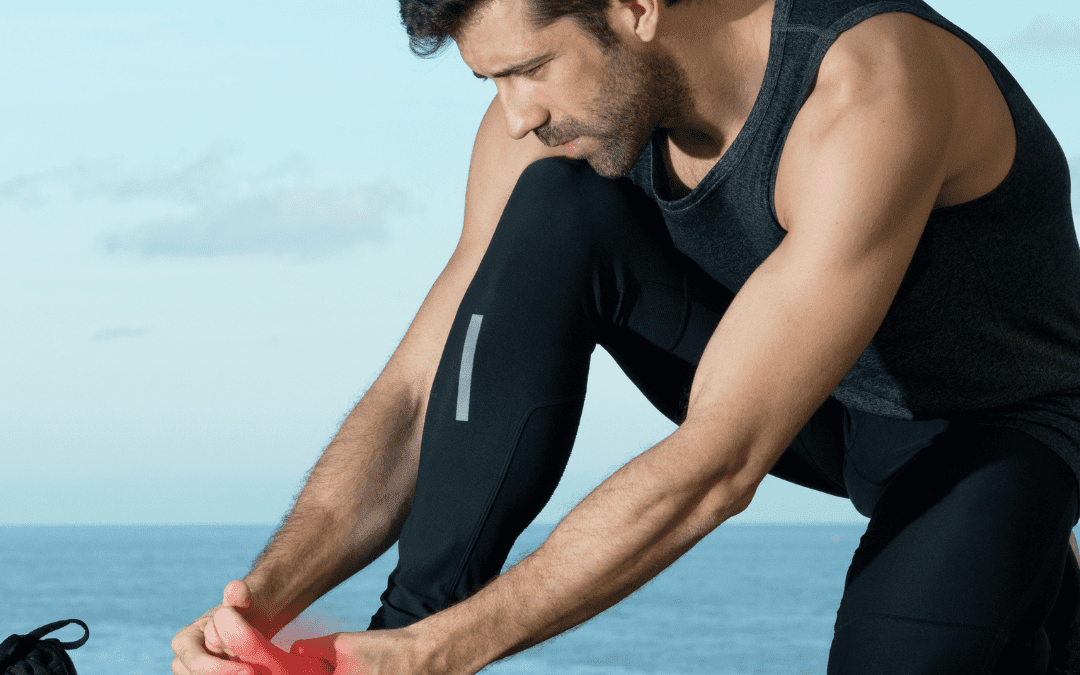What is a Bone Stress Injury and how to treat it?
Bone Stress Injury. It sounds pretty serious, doesn’t it? A bone that’s stressed from an injury. But what does it actually mean?
Well, a bone stress injury occurs when you repeat the same weight-bearing activity over and over. Unfortunately, it’s the things we usually love that can cause your bone stress injury, such as running or jogging (well, some of us love it!). Your bone isn’t just stressed, it actually starts to fracture, which needs rest and a tailored recovery plan to fully heal.
Here at Progressive Physiotherapy Group, our senior physiotherapist Daniel is a keen runner, so has a keen interest in diagnosing and treating bone stress injuries in athletes.
The treatment for bone stress injuries fall largely into two categories:
1) reduce the load/strain on the stress site, and
2) build capacity of the bone stress site so it can better tolerate future loading.
What causes a bone stress injury?
A bone stress injury, or BSI, occurs due to repetitive loading of a bone, which results in microfractures that won’t heal due to the bone resorption (where your bone breaks down) exceeding the bone formation (where new bone is produced).
Mechanical loading during an activity such as running will cause your bone to deform. The amount that your bone deforms depends on how much load is on the bone and the capacity of the bone to resist deformation (strain). The force that you put on your body when running is well below the levels of strain required to cause a bone to fracture, but these strains do have the capacity to cause microdamage to bone.
The level of micro damage that you’ll sustain is influenced by the:
- Frequency
- Magnitude and,
- Speed of the strain.
Once this threshold has been surpassed, further bone damage entails, leading to bone injuries.
When it comes to loading up your joints, here are some top tips:
- Forces that are high in impact and low in numbers (impact activities) or forces low in impact and high in numbers (vibrations) are most desirable
- Only several minutes of activity are required to build bone strength
- To build bone strength, exercise programs completed 3-4 times per day are better than once per day programs
- Following exercise, rest restores the mechanical properties of the bone. After 4 hours rest, 75% of the mechanical properties are restored and following eight hours rest, 85% are restored.
- One week of rest/recovery is recommended every two-three months to maintain the bones sensitivity to exercise, over an extended period of time
- The bone adapts to specific movement/directions trained through exercise. It is recommended to exercise in different directions, involving bending and rotational forces.
- Bone strengthening programmes should start at a young age to optimize structural properties of bone for the lifetime
What Are The Symptoms of a Bone Stress Injury?
A Bone Stress Injury, or BSI, typically starts with a mild ache that flares up after exercise. You might find that the pain won’t go away when you’re exercising and only stops when you finish training.
As the injury worsens, your pain can become more severe and you’ll notice it kicks in earlier in your training and hangs around for longer – even showing up during your everyday activities.
An advanced Bone Stress Injury will usually severely restrict your activity and cause inflammation, which may be painful when you’re resting and at night.
How we treat a Bone Stress Injury at Warragul’s Progressive Physiotherapy Group
When you visit our team of physiotherapists in Warragul, the first thing we’ll do is assess the severity and nature of your Bone Stress Injury.
Following a thorough assessment, we’ll create a tailored plan to:
1) reduce the strain going through the Bone Stress Injury region to allow it to heal, and
2) start a bone strengthening program to build the capacity of the Bone Stress Injury to withstand forces.
You’ll be treated with any of the following (or a combination of these):
- Offloading the injury, for example with a moonboot or taping
- Cardiovascular exercise advice (safe exercise prescription)
- Muscle strengthening
- Bone strengthening programme, for example jumping
- Education and advice for self management and addressing risk factors for Bone Stress Injury
- Gait re-education
- Running programme advice
- Return to sports programme
The more of these interventions that can be included, the better the recovery and less likelihood of re-injury into the future.
How your Activity Might Change While You Recover From Your Bone Stress Injury
Here’s an idea of what you can expect while you recover:
- If you currently can’t move, you’ll typically spend 6-8 weeks on crutches, moonboot, or offloading shoe (protected weight bearing)
- For a partial weight-bearing Bone Stress Injury, you can restart activity when you’re pain-free
- An optimal loading approach should be incorporated, where weight bearing exercises are progressed guided by pain during, after or twenty-four hours post completion
- You can use painkillers and anti-inflammatory drugs in the short-term and only for resting/night pain and not for gait. Anti-inflammatory drugs, in particular, are known to reduce bone formation and limit bone adaptation to loading, so we recommend keeping them to a minimal.
Keep up the exercise!
Where possible, we’ll never tell you to stop exercising with a Bone Stress Injury.
We encourage you to continue with your usual fitness while your bone is healing, if appropriate. If you’re a runner, you might want to consider non weight-bearing fitness options such as cycling, swimming, deep-water running and alter-G running.
It’s been found that your risk of getting a Bone Stress Injury is associated with your muscle strength and size, so it’s worth trying resistance training exercises such as:
- Foot intrinsic strengthening (short foot exercises non weight-bearing and towel curls)
- Leg presses through the heels
- Knee extensor and flexor strengthening and hip strengthening
- Heavy and explosive strength training to improve bone density/strength
What’s the Recovery Time From a Bone Stress Injury and How Soon Can I Return To Exercise?
Once you can walk pain-free (this can be anywhere from 2-8 weeks), we can start a return-to-running alongside a progressive rehabilitation programme. We’ll work on a tailored plan which might include a jumping program and gait retraining to further strengthen the mechanical properties of your bone and minimize bone strain in the future.
How Can I Prevent a Bone Stress Injury in the Future?
Sorry to break the bad news to you but running alone does not strengthen bones.
This is because your running force is just one direction and repetitive and it needs to be in multiple directions to strengthen. Progressive running and jumping programs can help build your bone strength (particularly jumping).
Jumping
Here’s an example of a jumping program that we recommend for improving bone strength:
- Progressively increasing loads
- Not many loading repetitions per efforts
- Repeat several times per day and at least three days per week
Think of it as having an adult tantrum – you enjoy that good stomp out on the floor!
Gait Retraining
Gait retraining is another great way to reduce bone-loading during running, especially during recovery from a BSI.
There are a few gait retraining methods that you can incorporate to reduce bone load:
- Increasing cadence by 5-10% to reduce the risk of tibial BSI
- Reduce overstriding, which is associated with increased when you decelerate and increased tibial forces
- Reduce accelerations for less tibial shock
- Train slow to race fast. Slower intensities and less distance will result in much less bone stress over any given run.
Getting Treatment for your Bone Stress Injury at Progressive Physiotherapy Group, Warragul
Daniel, one of our Senior Physiotherapists is not only a keen runner but he also specialises in treating all injuries related to running and impact sports, including those pesky Bone Stress Injuries.
If you’d like to book in for an assessment and treatment, you can book an appointment online or give the ever-friendly Di a call on 0497 111 127

